Best Exercises for Seniors & Which One to Avoid?
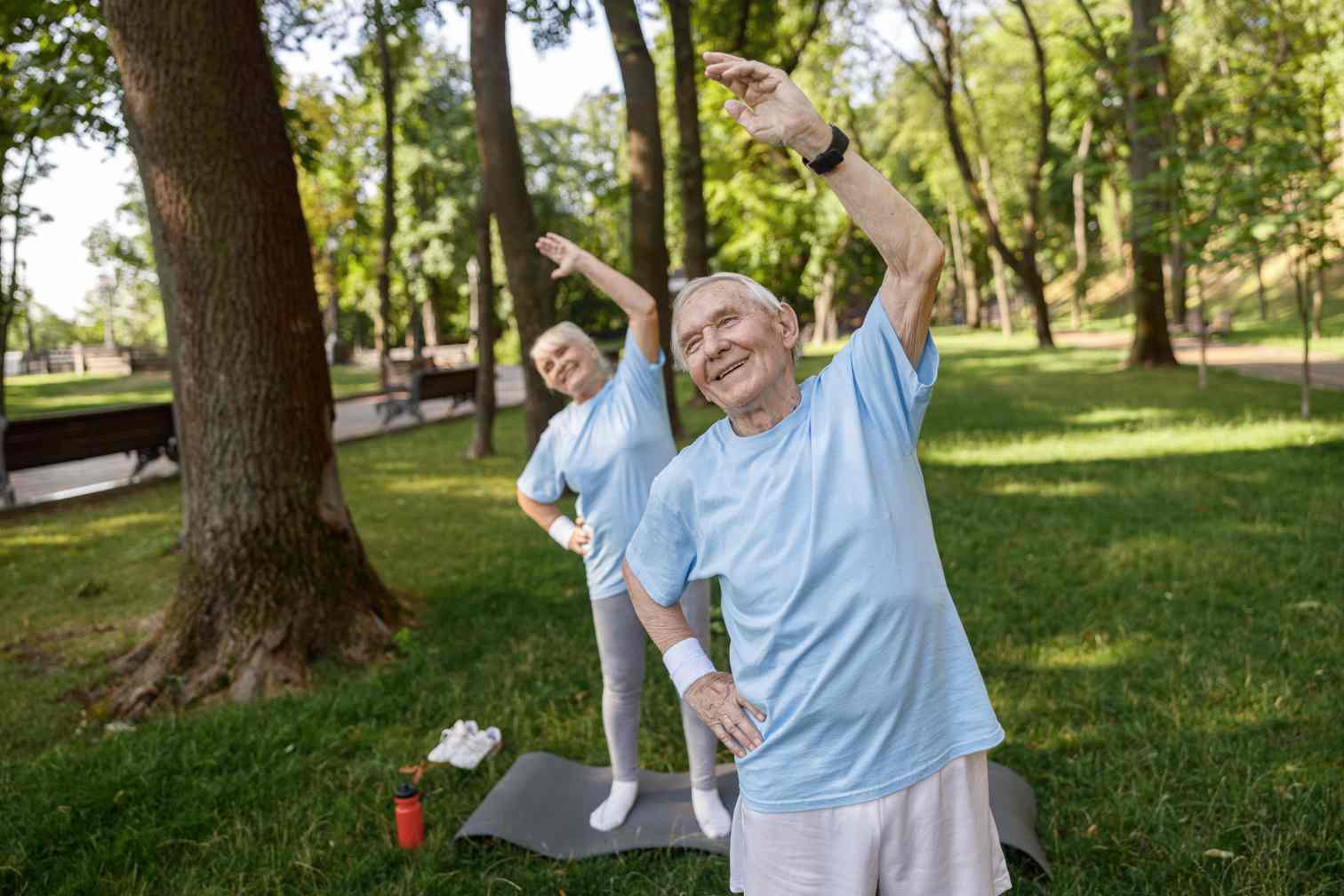
An increasing number of studies demonstrate the need for regular exercise, particularly for seniors, and the trend of seniors choosing an active lifestyle over a passive one. Moderate physical activity may improve the general health of elders.
Strength training exercises can be combined with aerobics and walking. Ideally, an older adult wishing to start an exercise regimen should be able to fit 150 minutes a week of moderate-to-intense physical activity into their schedule.

Table of Contents

Why Do Older People Need to Exercise Daily?
Daily exercise is crucial for older adults as it strengthens muscles, improves balance, and reduces falls. This helps them maintain independence for longer. Exercise also boosts heart health, lowers disease risk, and improves mood, promoting a better overall quality of life.
Additionally, it can sharpen cognitive function and even help fight off depression, keeping seniors mentally engaged and positive.
16 Best Exercises for Older People
To enhance their physical fitness, older people should follow specific exercises that will benefit them and keep them healthy.
Below are some exercises that will help you begin your daily regime.
Aerobic Exercises for Seniors
Adults aged above 60 should do approximately 2.5 to 5 hours of moderate exercise every alternate day of the week.
Here is a list of some aerobic activities they can follow:
1. Walking
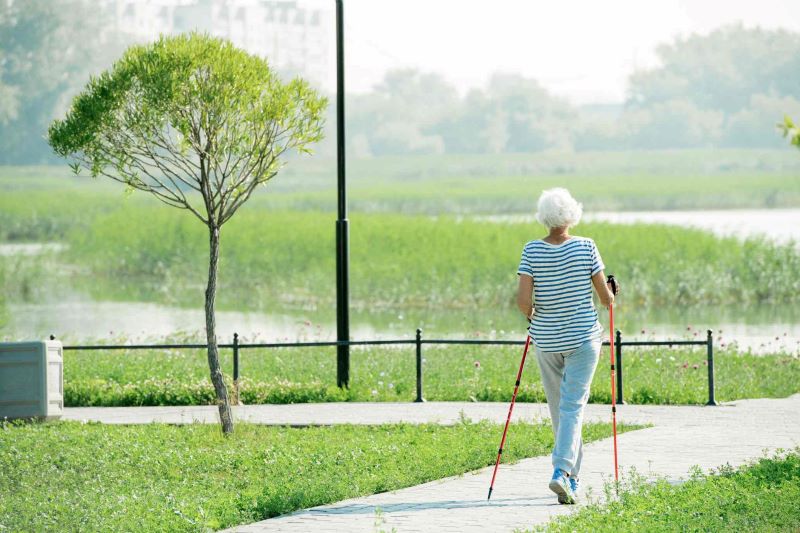
Walking is an especially great exercise for older people for several reasons. Despite being gentle, walking strengthens muscles and improves balance, which can help prevent falls, a major concern for seniors.
Benefits:
Older people can use a walker to do cardio at a time and distance that is suitable for them.
Also, nature walking, that is, walking on varied terrains such as beaches, mountains, or a road, improves agility.
2. Cycling

Cycling is a fantastic form of exercise for older people for several reasons. It's low-impact, meaning it's gentle on joints, unlike high-impact activities like running.
Benefits:
This enhances blood flow and controls the heart rate and lungs as well.
People willing to reduce ground reaction forces can choose this exercise because it reduces muscle dysfunction or pain.
3. Dancing
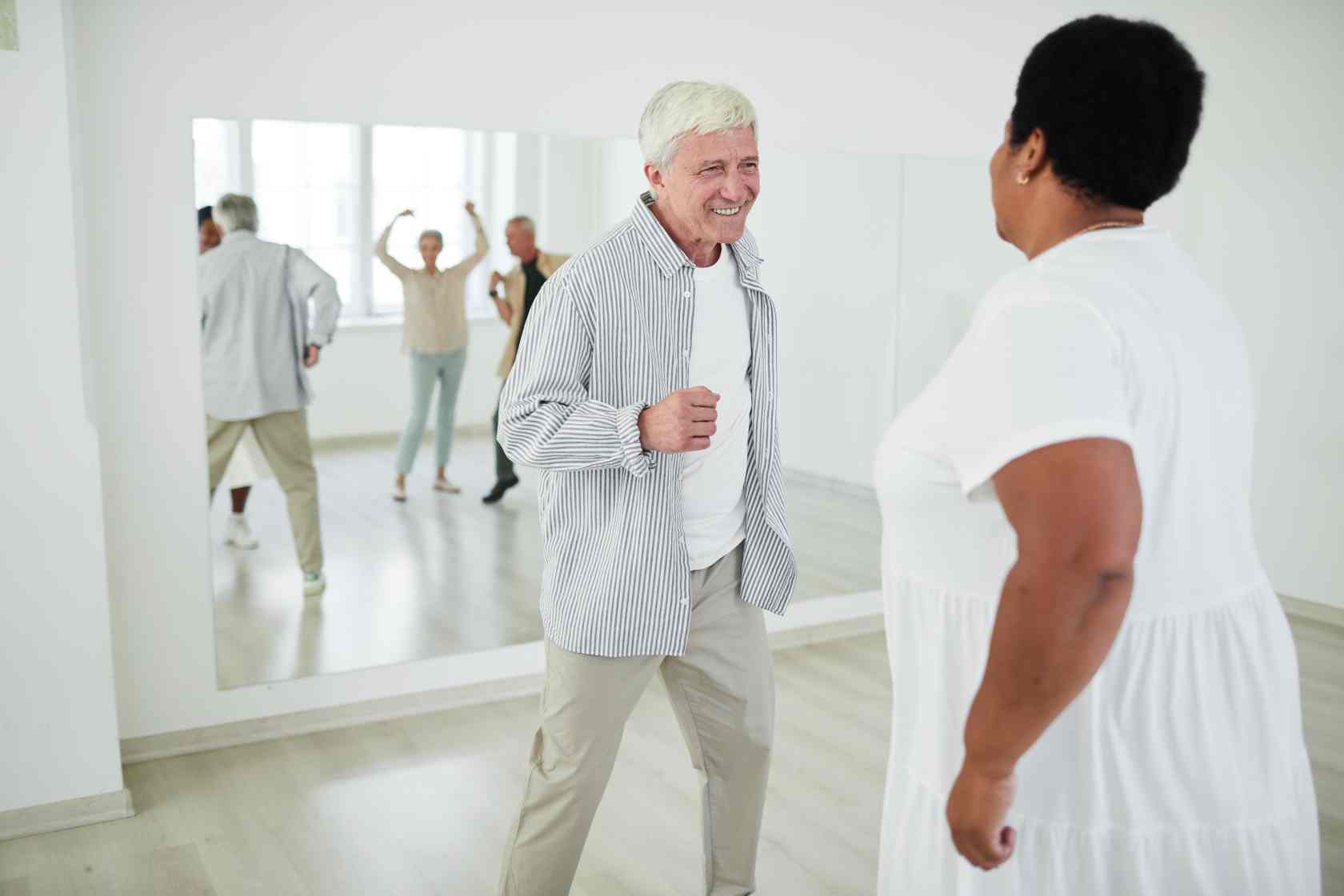
Dancing is a fantastic form of exercise for older adults for several reasons. It offers a fun and engaging way to stay active, unlike traditional workouts that can feel monotonous. It is also an excellent cardio form involving moving your body and your hips.
Benefits:
Dancing is a wonderful exercise that enhances heart rate, improves body balance, and strengthens several larger muscles.
This will automatically lift your spirits if you want to join a group.
Strength Training Exercises for Seniors
Some body changes are inevitable as you grow old. These decrease muscle and bone mass, which makes an elderly person inactive. That is why it is essential to follow regular exercise, which helps a person to be stronger in mind and body.
According to researchers, overweight elders who started doing strength training exercises had lower heart and metabolic diseases.
Here is a list of some excellent strength workouts for older people:
4. Bridge
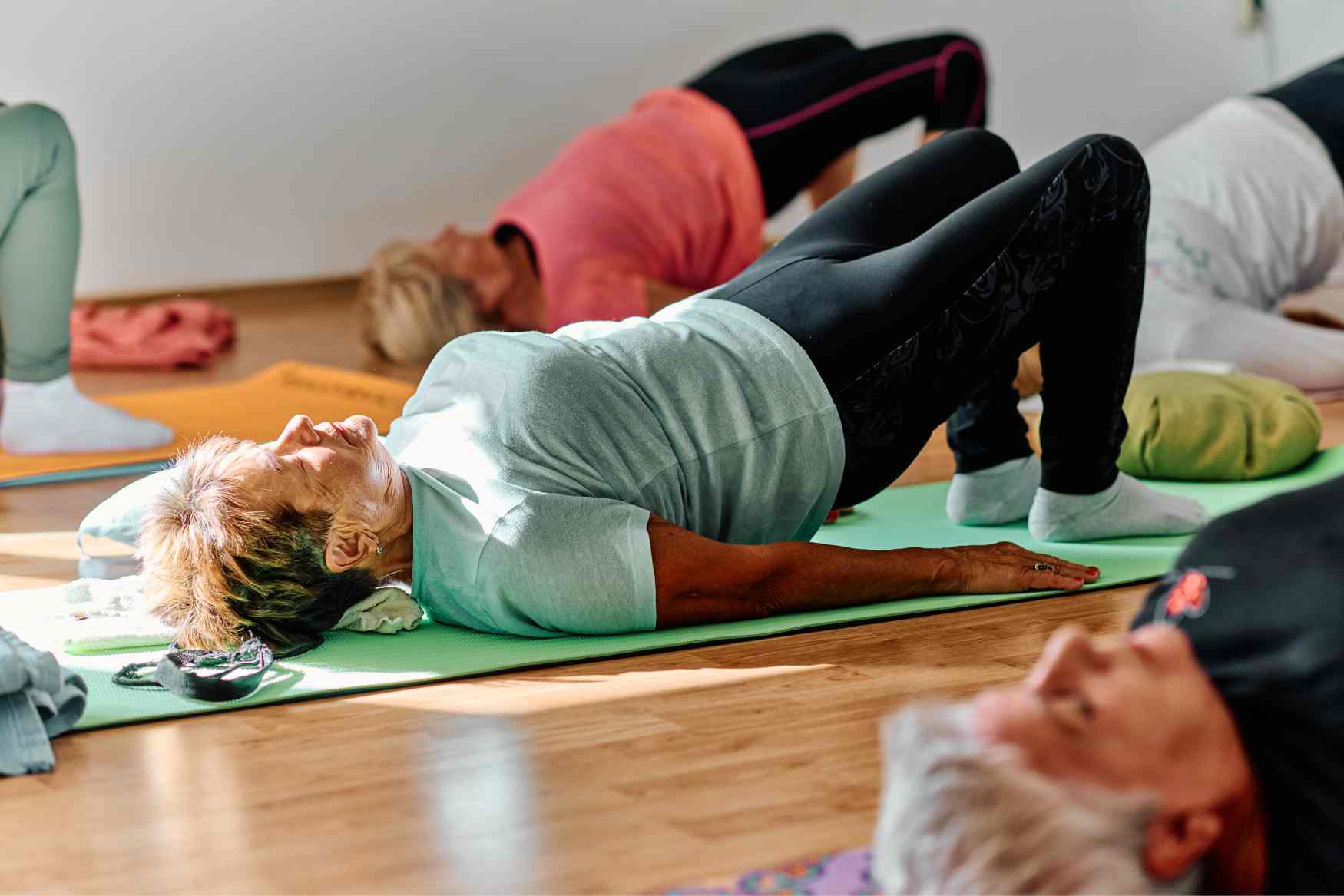
To perform this exercise, one has to lie on one's back, knees bent and feet flat and steady on the mattress. Then, raise the hips and be constant for a few seconds at this highest motion. Repeat 10 times after lowering your hips.
Benefits:
This workout strengthens your gluteal muscles while you get up from a chair.
Additionally, this enhances your bed mobility and walking and standing conditions.
It strengthens the flexor muscles of your hip, which weaken due to an inactive lifestyle.
5. Sit to Stand
Sit on a high chair so your hands are not required to support you when standing up. You can always keep a chair in front for safety and continue to sit and stand repeatedly. Do this 10 times.
Benefits:
This workout will reduce your chances of getting imbalanced while getting up from the toilet seat.
It strengthens your hip and leg muscles and allows you to be confident in the future while standing up or sitting down.
6. T-Rows
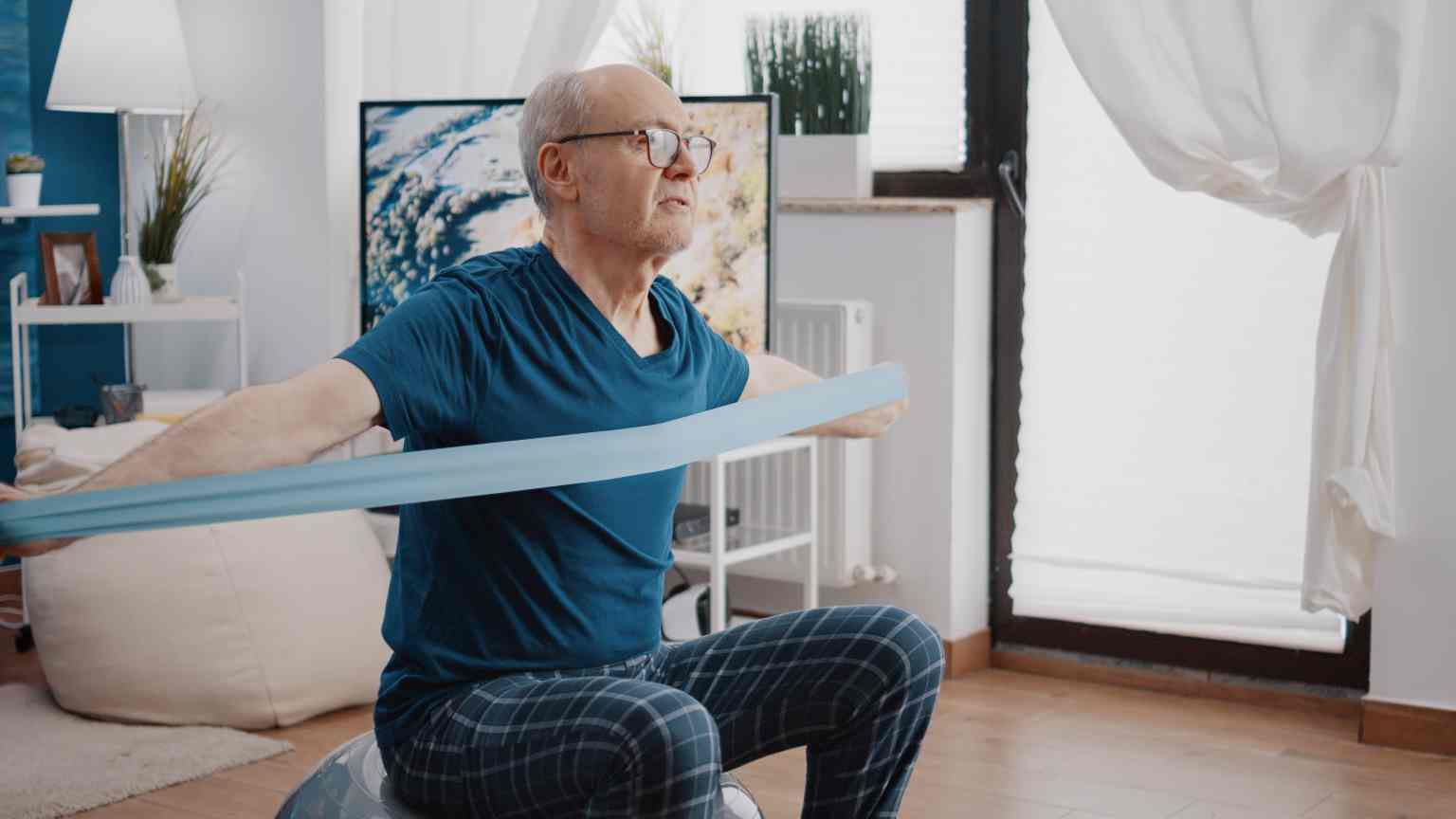
Begin by sitting upright in a chair, holding a resistance band at chest height in front. Stretch the band horizontally by stretching your arms to the right and left. This should touch the centre of your breastbone or sternum. Return to the starting point and repeat the exercise 10-15 times.
Benefits:
This exercise will improve your upper back muscles and enhance the upright standing posture of the shoulder blades.
In addition, this workout helps maintain the neutral spine posture during walking and standing and keeps the body balanced.
7. Abdominal contractions
Take a deep breath and tighten your abdominal muscles to increase abdominal muscle strength. Hold for 3 breaths and then release the contraction. Repeat 10 times. You can do this seated or lying down.
Benefits:
Strong abdominal muscles contribute to overall functional mobility, making everyday activities such as bending, lifting, and reaching easier and safer.
Weak abdominal muscles can contribute to lower back pain. Strengthening these muscles can help alleviate discomfort and improve spinal alignment.
8. Dumbbell Strength Training
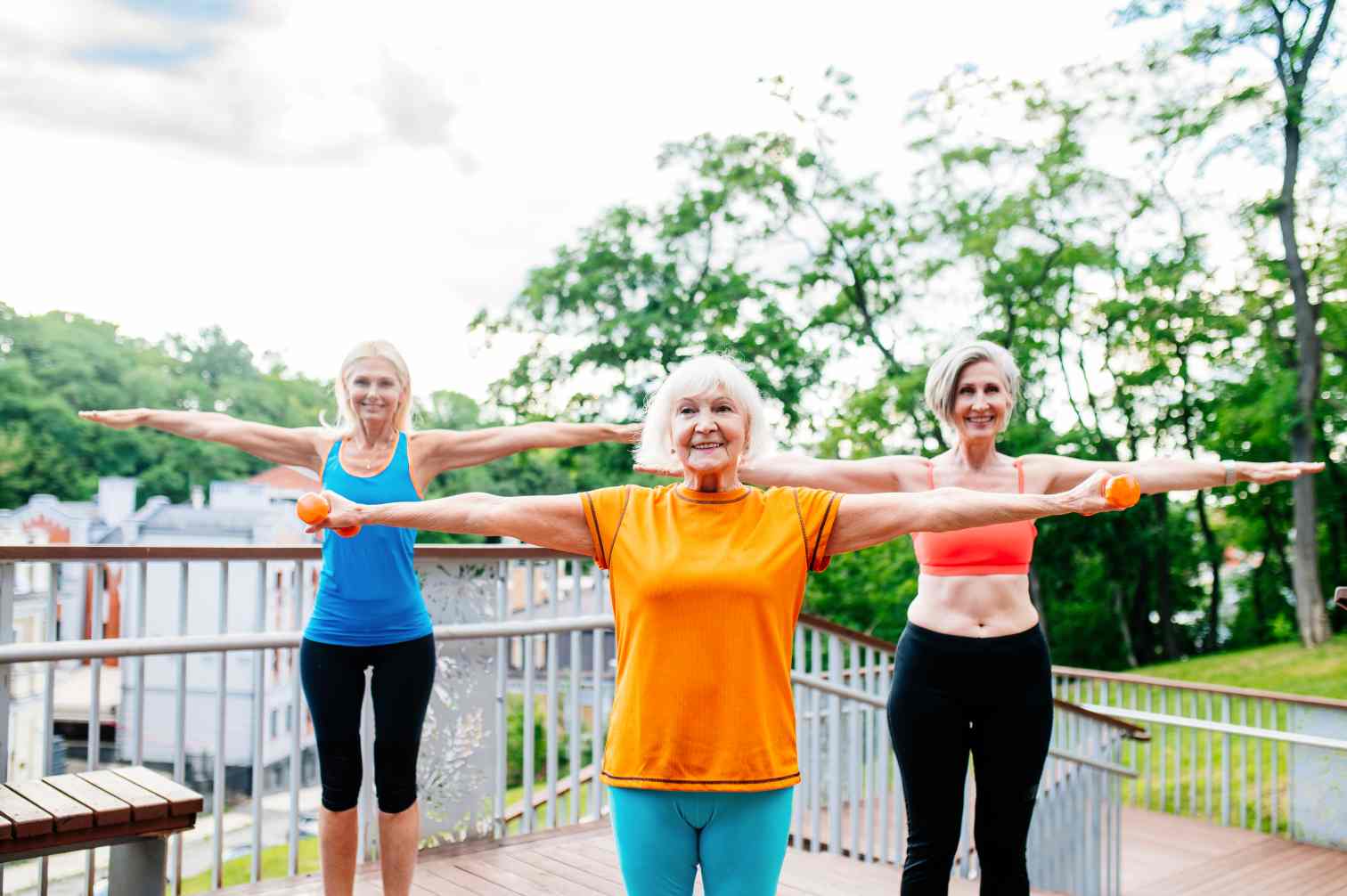
Dumbbells allow seniors to isolate muscle groups to strengthen while improving balance and flexibility. Hold the dumbbell with your hands stretched and move your arms up, down and sideways.
Benefits:
Strengthening the muscles around joints can alleviate pain and stiffness, improve joint function, and reduce the risk of arthritis-related issues.
Dumbbell exercises that target core muscles and stabilisers can improve balance and stability, reducing the risk of falls and injuries.
Balance Workout for Seniors
As health conditions decline due to ageing, he/she tends to fall frequently due to imbalance in the body. This often leads to fractures, bruises, and sometimes head injuries. These conditions affect not only your mind but also your body.
Multiple systems work simultaneously to keep our body balanced. These include our vision, touch systems, and ears, which send our senses into our brain, which gets converted to motor output via our systems. All these systems might start working slower when we age, but following a daily regime will always prevent this.
Here are some workouts for seniors:
9. Single Leg Exercise With a Stool
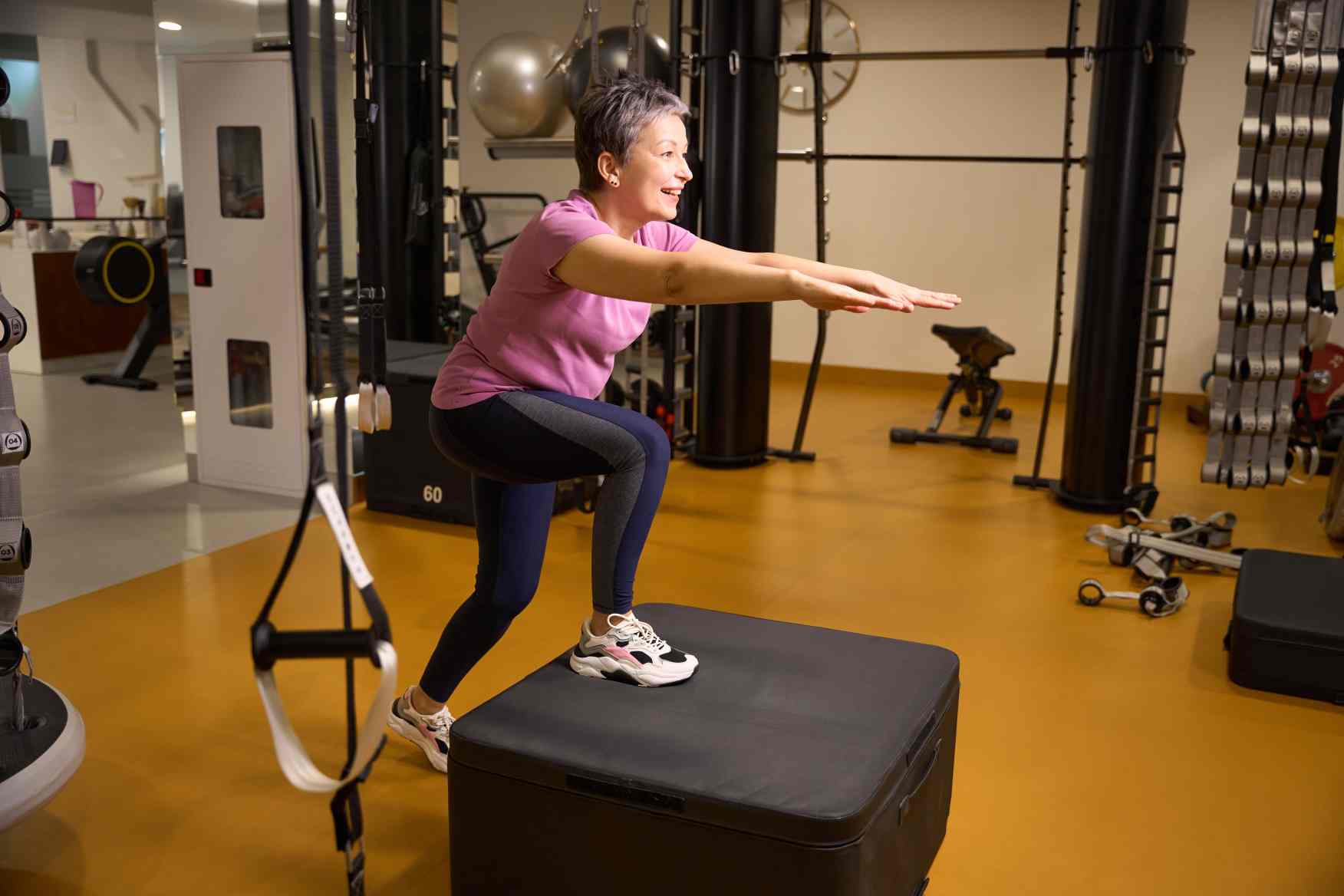
Stand before your kitchen sink to hold on or an area without support. Place your one foot carefully on a lower stool. Find balance as you stand upright, letting your hands go off the sink. Slowly lift your foot up and down from the stool.
Benefits:
This will keep your body balanced and your posture upright. You will feel the difference while walking alone.
This exercise will strengthen your leg muscles, reducing the chances of frequent falls.
10. Lower Body Strength Workout
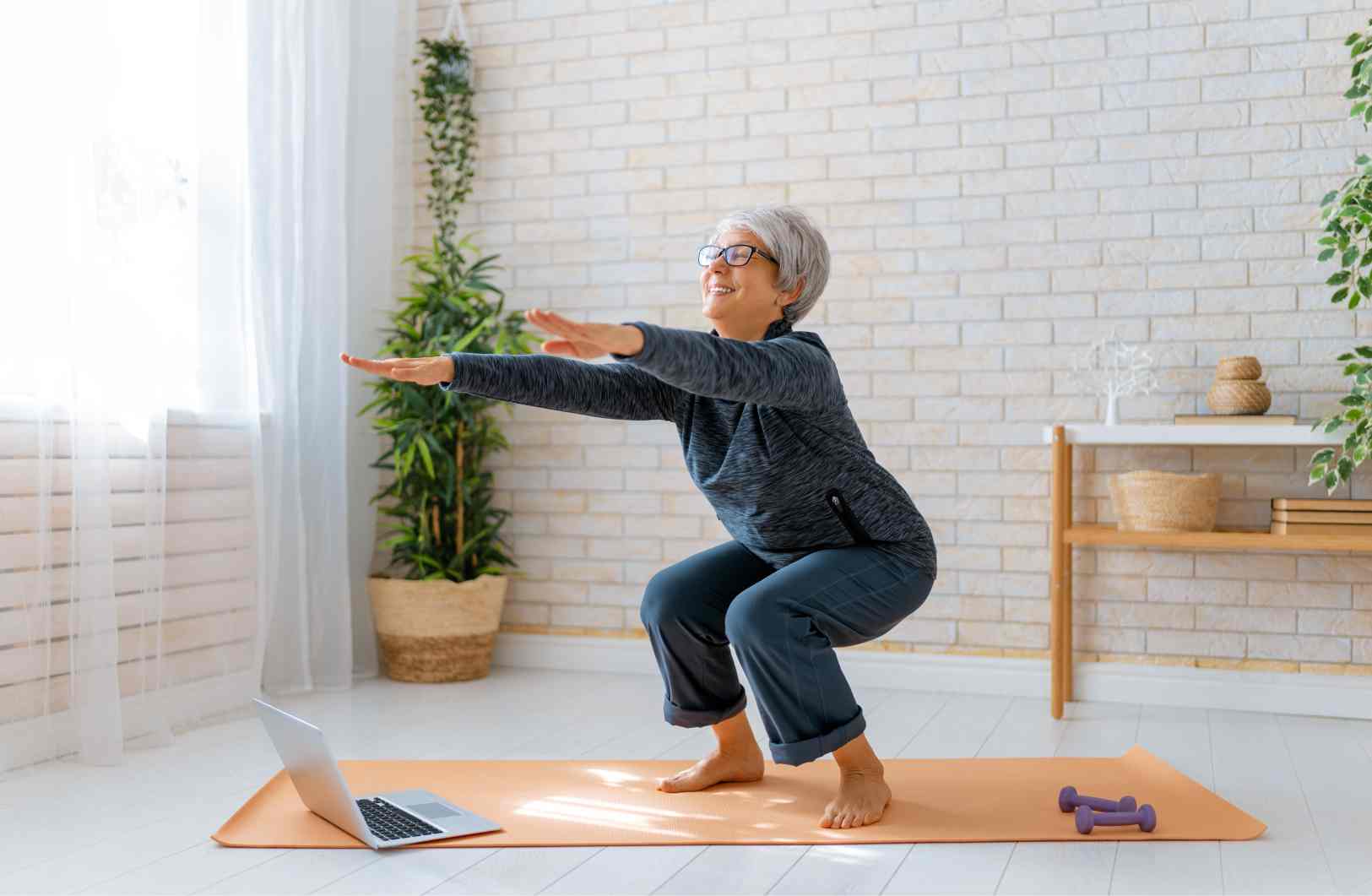
Lower-body strength workouts such as Roman deadlifts help strengthen your legs and hips. Start practising the sit-to-stand exercises; heel raises, and squats 10 times daily.
Benefits:
This will strengthen your hips, calves, and quads.
Additionally, this exercise is beneficial as it improves the balance of older people since the lower body weakens faster, leading to frequent falls.
11. Tai Chi
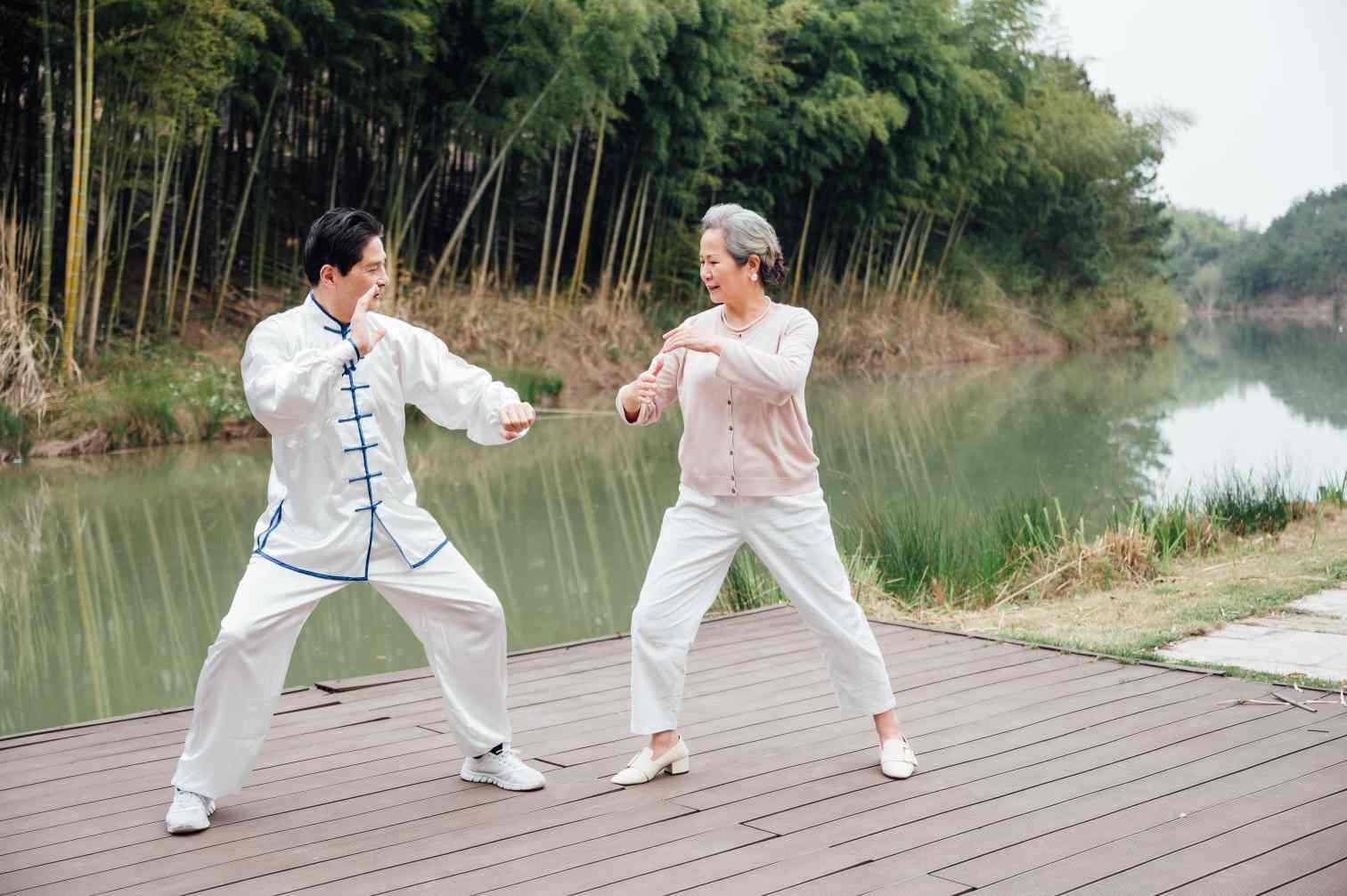
Tai Chi for Health Institute suggests this exercise benefits elderly persons with arthritis. Since it doesn't involve any high-risk moves, it is safe for seniors to practise this daily.
Benefits:
Benefits of Tai Chi include improving stress and arthritis pain relief.
Apart from improving body balance, this exercise enhances mood disorders, which are very common symptoms in older adults.
12. Shifting Weight
Stand with your feet hip-width apart and your weight evenly distributed on both feet. Relax your hands at your sides. Shift your weight onto your right side, then lift your left foot a few inches off the floor. Hold for 10 seconds, eventually working up to 30 seconds. Repeat 3 times.
Benefits:
Shifting weight exercises challenge the body's balance mechanisms, helping to improve stability and reduce the risk of falls for older adults.
These exercises help older individuals maintain or improve their motor skills and coordination.
Flexibility Exercises for the Elderly
Flexibility is a major necessity for seniors as it makes them independent and provides mobility. Often you will find elderly people feeling too weak to stand up or sit straight. This is because of reduced flexibility. Exercises contributing to flexibility improvement include stretches that focus your hips, shoulders, and lower body parts.
Here is a list of a few such exercises:
13. Knee Stretching
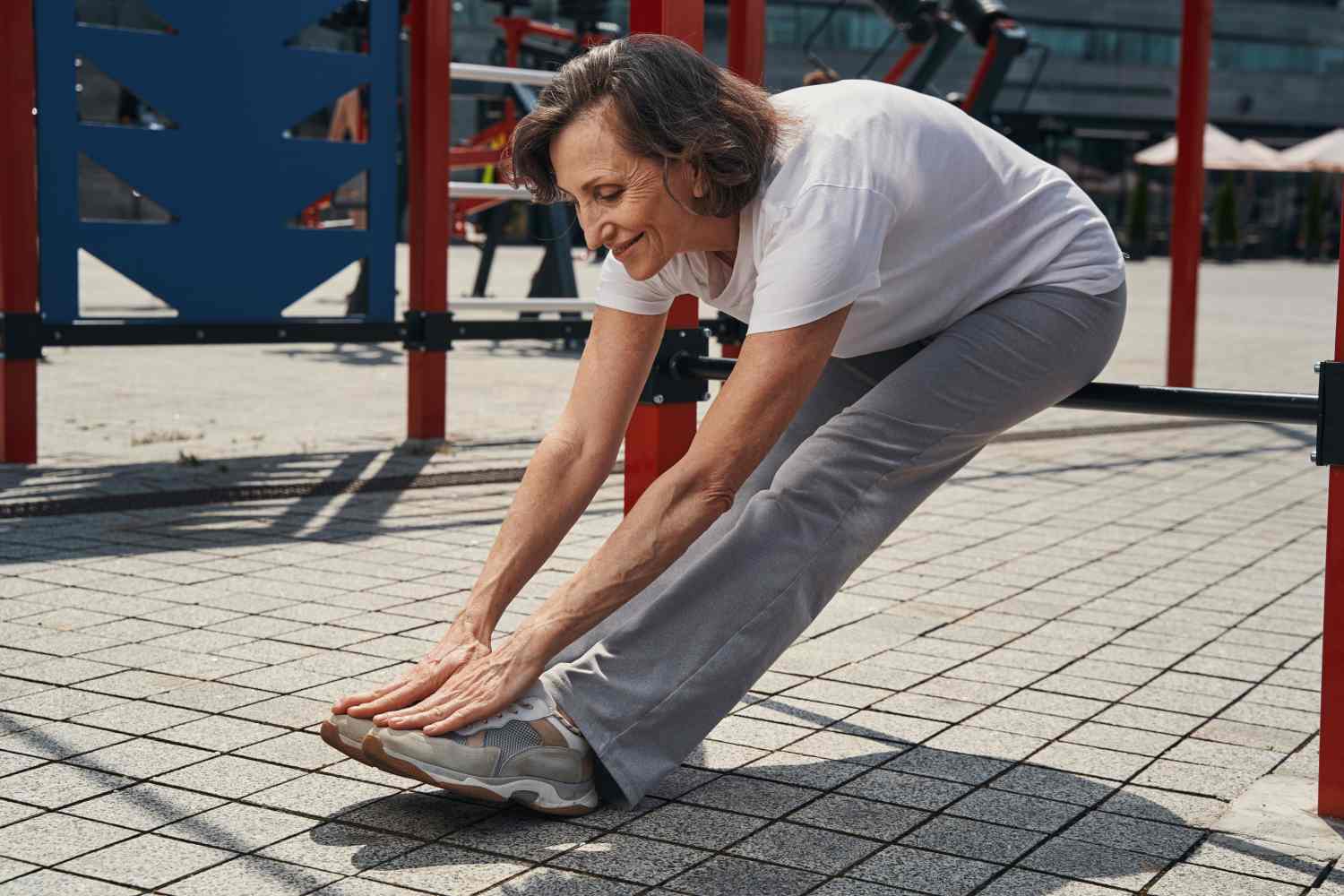
Sit upright in a chair or sofa, keeping one foot on a stool or the floor. Carefully lean forward as your hip hinges, and try to feel the stretch at the back of your knees. Hold this position for a few seconds before moving to the other leg and following the same workout.
Benefits:
This exercise improves your ability to stretch your knees while walking and avoids gait.
In addition, it improves your lower back pain by stretching the muscles attached to your pelvis.
14. Pec Stretch
Stand carefully in your doorway and hold your arm at your shoulder height. Then, place your right arm on the wall next to your door. Try to stretch your chest by turning your torso away from the arm. Do it for a few seconds and repeat on the other side.
Benefits:
This exercise helps in blood circulation, reducing the chances of cardiovascular diseases.
It also improves the flexibility of the chest muscles in your body.
15. Hip Flexor Stretch
In this exercise, you must lie on your bed with one leg hanging on one side. Hug your opposite thigh close to the chest. Try to stretch the front part of the hip and the thigh of the leg hanging. Hold on for a few seconds and repeat it on the other side.
Benefits:
This exercise will not only improve walking but also enhance the energy levels that are consumed during walks.
As older adults perform this exercise, it also decreases lower back pain and pain in the knees, groin, and hips.
Apart from all these exercises for old age mentioned above, there are some simple exercises people can begin doing.
16. Hamstring Stretch

This stretching exercise focuses on your legs and lower back, which is important for seniors to maintain flexibility. Sit on the floor with your feet stretched out. Bend forward and touch your toes. Go back to the original position and try again.
Benefits:
Maintaining flexible hamstrings can improve overall mobility, allowing older adults to engage in activities they enjoy.
Increased flexibility and improved balance from hamstring stretching can help prevent falls for older adults.
Best Home Exercises for Seniors
There are several exercises older adults can start doing without the need to hit a gym. Begin by doing simple exercises that will not put your body under too much stress. Here are some 6–8 minute exercises for seniors:
Wall push-ups
Abdominal contractions
Shoulder blade squeeze
Pelvic tilts
Toe taps
Heel raises
Knee lifts
Shoulder/ Upper back stretch
Rotation of ankles
Neck stretch
Besides doing these exercises, practising them according to a routine will provide better and faster results.
Weekly Exercise Routine For Older People
Centres for Disease Control and Prevention Trusted Source recommends exercise plans for seniors, including walking, cycling, swimming and other related workouts to increase flexibility and balance. They are as follows:
|
Days in a Week |
Exercises |
Impact |
|
Monday |
15 minute walk X 2 |
Strength and Balance |
|
Tuesday |
15 minute walk X 2 |
Strength and Balance |
|
Wednesday |
Thirty minutes of cycling, swimming, aerobics, dancing, balance exercises, etc. |
Strength, Flexibility and Balance |
|
Thursday |
Rest day |
Balance |
|
Friday |
15 minute walk X 2 |
Strength and Balance |
|
Saturday |
Thirty minutes of cycling, swimming, aerobics, dancing, flexibility exercises, etc. |
Strength, Flexibility and Balance |
|
Sunday |
Rest day |
Balance |
Health Benefits of Exercises for Seniors
Researchers say that physical fitness ensures a healthy body at any age. Therefore, older people enjoy more perks of a healthy mind and body in daily workouts. Older people must remain active as much as possible, automatically decreasing the chances of stress.
Here are some health benefits listed below:
Exercise improves the balance of the body at an older age.
Regular exercise for older adults reduces the chances of them becoming dependent on others.
More exercise means more energy and a more active body combating endorphins to reduce stress and promote healthy sleep.
Regular exercises enhance the functionality of the brain.
What are the Exercises that Older People Should Avoid?
Some exercises could be harmful for older people to perform. Here are some exercises that older people should consider avoiding:
- High-Impact Activities: Exercises like running or jumping can strain joints, increasing the risk of injury, especially for those with arthritis or osteoporosis. Older people shouldn't exert themselves.
- Heavy Weightlifting: While resistance training is beneficial, heavy lifting can strain muscles and joints, leading to injuries or increasing existing conditions like hernias or back problems. Heavy weightlifting could also cause major eye strain.
- Extreme Flexibility Exercises: Overstretching can strain muscles and ligaments, leading to injuries like strains or tears, especially for those with reduced flexibility due to age-related changes in connective tissue.
- High-Intensity Interval Training (HIIT): HIIT workouts can be too intense for older adults, increasing the risk of cardiovascular issues, muscle strains, or joint injuries, particularly if not accustomed to high-intensity exercise.
- Exercises with Poor Posture: Activities requiring improper posture, like heavy overhead lifting without proper form, can strain the spine and increase the risk of back or neck injuries, especially for older people.
Following regular workouts is essential for elderly people to ward off physical ailments. It keeps senior citizens hale and hearty and gives them a purpose, keeping them under a routine. Follow the tips from above to achieve an excellent healthcare routine for yourself. It's always possible to start working out!













